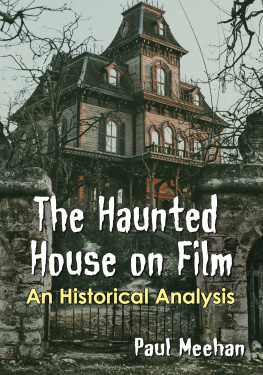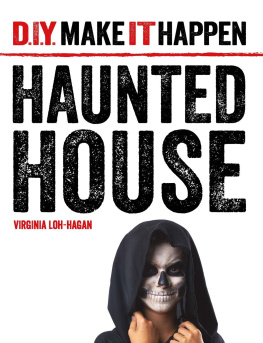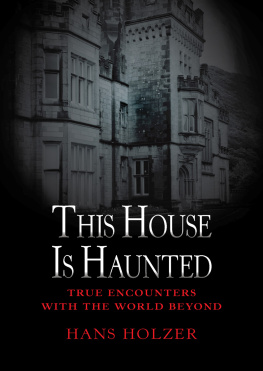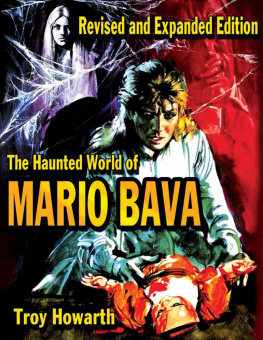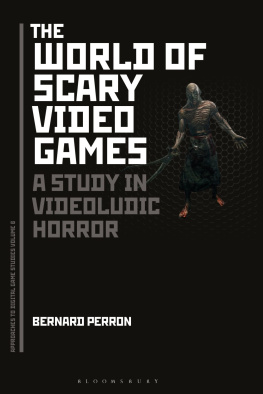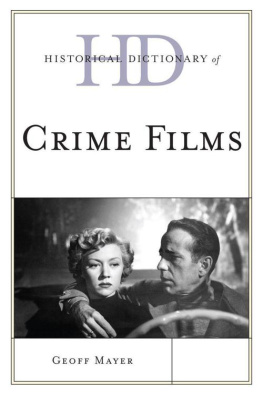
Also by PAUL MEEHAN
AND FROM MCFARLAND
The Ghost of Ones Self: Doppelgangers in Mystery, Horror and Science Fiction Films (2017)
The Vampire in Science Fiction Film and Literature (2014)
Horror Noir: Where Cinemas Dark Sisters Meet (2011)
Cinema of the Psychic Realm: A Critical Survey (2009)
Tech-Noir: The Fusion of Science Fiction and Film Noir (2008; paperback 2018)
The Haunted House on Film
An Historical Analysis
PAUL MEEHAN

McFarland & Company, Inc., Publishers
Jefferson, North Carolina
LIBRARY OF CONGRESS CATALOGUING DATA ARE AVAILABLE
BRITISH LIBRARY CATALOGUING DATA ARE AVAILABLE
e-ISBN: 978-1-4766-3820-1
2020 Paul Meehan. All rights reserved
No part of this book may be reproduced or transmitted in any form or by any means, electronic or mechanical, including photocopying or recording, or by any information storage and retrieval system, without permission in writing from the publisher.
Front cover images 2020 Shutterstock
McFarland & Company, Inc., Publishers
Box 611, Jefferson, North Carolina 28640
www.mcfarlandpub.com
Preface:
A Haunted House Near You
Theres a house thats believed to be haunted in most every neighborhood in America. Its usually a run-down dwelling or abandoned home that attracts kids looking for ghostly thrills. In my old neighborhood in Brooklyn there was a house where an elderly woman lived that we kids called the Witches House, a place that hadnt been painted in many years and had a dilapidated look. The eccentric old lady who lived there alone reportedly never left the house and had all her food and other goods delivered to her door. She was doubtless just an old woman who no longer had the wherewithal to keep the place up, but our childish imaginations transformed her into an evil witch, and her house into a haunt. On Halloween the braver boys would dare to ring the doorbell and run away, but the witch within never put in an appearance.
In his nonfiction book on the horror genre Danse Macabre, famed writer Stephen King recounts an anecdote about an abandoned place in his childhood hometown of Durham, Maine, called the Marsten House. King relates how, when he was ten years old, he and another boy snuck into the ramshackle mansion to explore the deserted dwelling, which contained decrepit furniture, a badly out of tune piano, stacks of moldering magazines and other pieces of junk. Not content to confine themselves to the ground floor, the two boys decided to explore the upstairs rooms, but unbeknownst to them Kings older brother and cousin had followed them into the house. King and his companion were promptly scared out of their wits when the kids downstairs began to play eerie chords on the old piano, much to the amusement of the older boys. While it was just a prank, King and his friend were permanently spooked and never returned to the Marsten House.
When I moved to the Richmond District in the western part of San Francisco during the 1990s, I discovered that about three blocks from where I live was another ruined house with a much more sinister reputation. At 6114 California Street, nestled between two modern apartment buildings, lay the ruins of a weird, medieval-looking house painted entirely in black. It reminded me of the mad inventor Rotwangs anachronistic dwelling lying in the middle of the futuristic city in Fritz Langs 1927 sci-fi classic Metropolis. The decrepit house was surrounded by a chain link fence, while busted-up furniture and other refuse littered the front yard. I would later learn that the creepy old place was called the Black House or the Devils House because it had been the abode of one Anton LaVey, founder and high priest of the Church of Satan.
LaVey grew up in Marin County and reportedly quit school at 16 to join the Clyde Beatty Circus, where he performed as a lion tamer and magician. A showman and huckster at heart, LaVey hit his stride in San Francisco during the psychedelic 1960s when he fell in with a group of weird characters who inhabited another strange abode, the Westerfeld House, a Victorian mansion in the citys Haight-Ashbury district. At the time, the notorious writer and experimental filmmaker Kenneth Anger was renting the mansion, where he shot a short film entitled Invocation of My Demon Brother which featured a musical soundtrack by Mick Jagger. Playing the role of Lucifer in the film was Bobby Beausoleil, who would later join the homicidal Manson family cult and would commit the murder of music teacher Gary Hinman on Mansons orders. Anger moved out of the Westerfeld in 1967, but occult rituals continued to be performed over the years, and when the mansion was sold in 1986 the new owner had monks from the Hartford Street Zen Center perform a cleansing and blessing for the house, which seems to have exorcised any residual dark forces lingering therein.
In 1966 LaVey founded the Church of Satan and moved his operation to the house at 6114 California Street, where he authored his demonic manifesto, The Satanic Bible. He painted the house black and began conducting satanic rituals inside that soon brought him notoriety and made him a minor celebrity. Sporting a shaven head, a devilish beard and black robes, he cut a diabolic figure as he rubbed elbows with Hollywood luminaries like Sammy Davis, Jr., and Jayne Mansfield and initiated them into the church. Dubbed the Black Pope by the media, he claimed to have been hired as a technical advisor for director Roman Polanskis 1968 horror hit Rosemarys Baby, and even to have played the role of the devil in a key scene, but this cannot be verified. Ceremonies conducted at the Black House were chiefly of the orgiastic variety, but some rituals reportedly involved cadaver body parts obtained from a local coroner. In spite of its dark reputation, however, no acts of murder or mayhem were ever associated with the Black House, and the Satanists were considered just another far-out, but harmless, hippie cult.
LaVeys dark star began to wane after the infamous Helter Skelter murder spree perpetrated by Charles Manson and his demented family in Los Angeles in 1969. Roman Polanskis wife Sharon Tate was murdered, along with coffee heiress Abigail Folger, Hollywood hair stylist Jay Sebring, Steven Parent, Wojciech Frykowski, Leno LaBianca, Rosemary LaBianca, and Sharon Tates unborn son posthumously named Paul in a brutal homicide committed by Mansons followers. As Sebring was a member of the Church and LaVey also had connections with Polanski and Manson Family members Bobby Beausoleil and Susan Atkins, LaVey and the Church suffered from guilt by association and went into a steep decline. LaVey continued to conduct the rites of Lucifer in the Black House, but the cult faded into irrelevance during succeeding decades.
The Black Pope died in 1997 and the house fell into ruin, becoming the dilapidated wreck I would become familiar with. The tiny single-family home, which had been built in 1905, was bulldozed in 2001 and replaced by an unremarkable two-and-a-half story condo built in 2008. The city retired the 6114 California Street address, and today no one would know that the Church of Satan had ever existed there. But the Black House was not the only haunt in my neighborhood.
My friend Toby (not his real name) lives in a third story walk-up apartment in the Richmond District located a few blocks from Golden Gate Park. Toby and I played together in the house band in a local club for a couple of years, and his apartment is a gathering place for musicians who like to get together for informal jam sessions. Its a well-worn but spacious place with excellent acoustics for recording. Doing some research, I found that the house was built in 1910, just four years after the devastating 1906 San Francisco earthquake.
Next page
